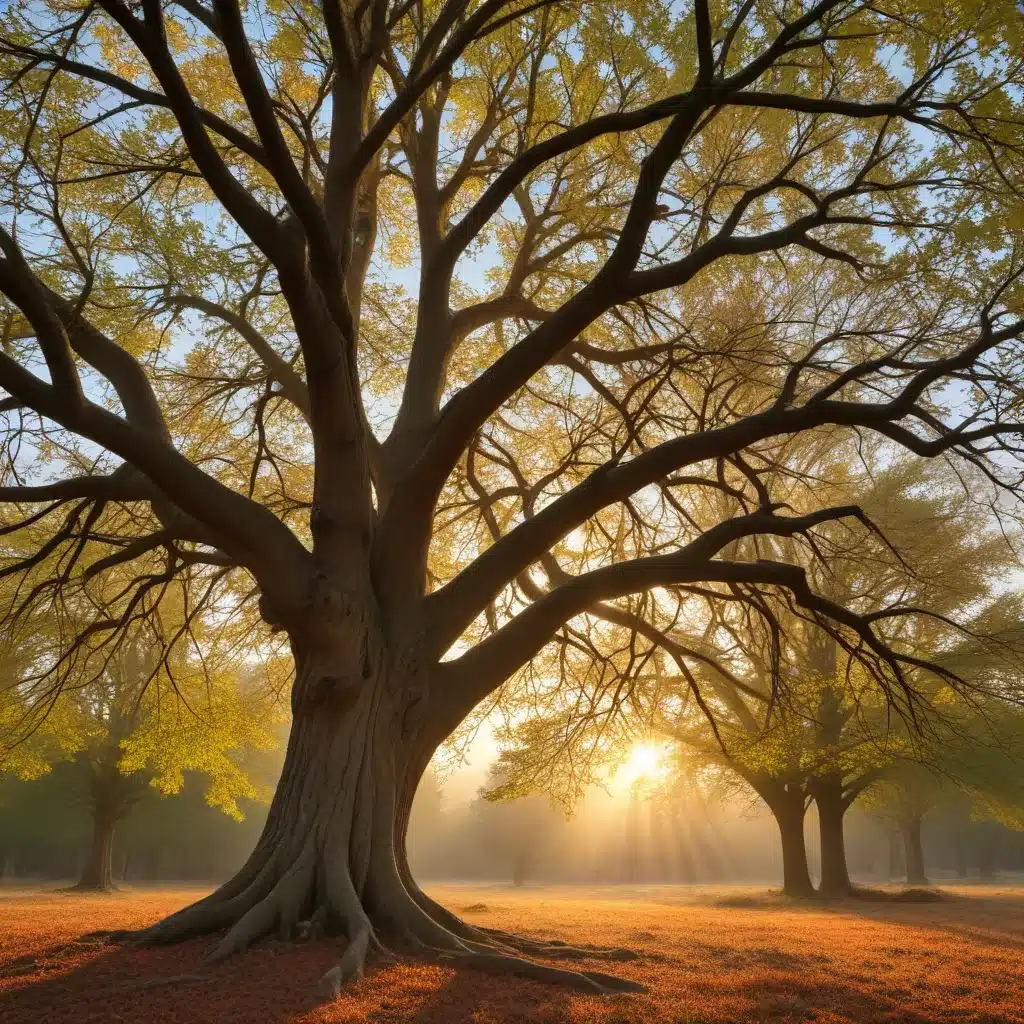
Trees exhibit a remarkable degree of phenological responsiveness to the cyclical changes in their environment. Through intricate sensing mechanisms, they are exquisitely tuned to the cues that drive their seasonal development, aligning critical physiological processes with the rhythm of the seasons. Understanding these patterns of growth and adaptation is not only scientifically fascinating, but also essential for effective TriCounty Tree Care and the long-term sustainability of our urban and rural forests.
Tree Phenology and Adaptation
At the heart of a tree’s seasonal behavior lies its ability to perceive and respond to environmental signals. Photoperiod, or the duration of daylight, is a primary cue that triggers key developmental transitions, such as bud break, flowering, and leaf senescence. As daylight hours wax and wane, trees orchestrate a complex series of physiological changes to prepare for the challenges of each season.
During the growing season, trees focus their resources on active growth, photosynthesis, and the accumulation of carbohydrate reserves. However, as days shorten in the fall, trees shift gears, initiating processes to harden off tissues, shed leaves, and enter a state of dormancy. This dormant phase is essential for protecting the tree from winter stresses like freezing temperatures and desiccation. Dormancy is broken in spring when day length and other environmental cues signal the tree to resume active growth.
Trees have evolved a diverse array of adaptive strategies to thrive in the face of seasonal fluctuations. Some species, such as deciduous trees, shed their leaves entirely to minimize transpirational water loss during the winter. Evergreen species, in contrast, retain their foliage but may adjust their stomatal conductance and leaf orientation to reduce water loss and cold damage. Many trees also accumulate cryoprotectants like sugars and antioxidants to protect cellular structures from freezing injury.
Wood Formation and Growth Patterns
A tree’s annual growth cycle is vividly recorded in the wood it produces. The cambium, a meristematic tissue located just beneath the bark, is responsible for generating new wood and bark cells. During the growing season, the cambium is active, producing a distinct layer of earlywood with large, thin-walled cells. As the season progresses, the cambium shifts to producing latewood, which has smaller, thicker-walled cells.
The demarcation between earlywood and latewood forms an annual growth ring, providing a chronological record of the tree’s history. By analyzing these growth rings, a practice known as dendrochronology, scientists can reconstruct past environmental conditions, such as temperature, precipitation, and disturbance regimes. This information is invaluable for understanding long-term climate trends and the resilience of tree species to environmental change.
Nutrient Cycling and Resource Allocation
The cycling of nutrients within a tree is also heavily influenced by the seasons. During the growing season, trees actively take up nutrients from the soil, such as nitrogen, phosphorus, and potassium, to fuel new growth. As autumn approaches, trees begin to translocate these essential nutrients from the leaves to the woody tissues and root system, where they are stored over the winter.
In spring, these stored reserves are remobilized to support the initial flush of new growth, before the tree can resume active nutrient uptake from the soil. This efficient cycling of nutrients allows trees to maximize their use of limited resources and adapt to seasonal variations in resource availability.
The allocation of carbon within a tree also follows a seasonal pattern. During the growing season, trees prioritize the production of new leaves, stems, and roots, while in the dormant season, carbon is preferentially partitioned to the storage of carbohydrates and other metabolic reserves. This strategic allocation of resources enables trees to withstand the challenges of winter and quickly resume growth in the spring.
Abiotic Stress Responses in Trees
Trees must contend with a variety of abiotic stresses that fluctuate throughout the year, and their adaptations to these seasonal challenges are truly remarkable. Temperature extremes, for example, can pose a significant threat to tree health, but many species have evolved mechanisms to tolerate or avoid cold injury.
As autumn approaches, trees begin to harden off their tissues, reducing water content and increasing the production of cryoprotectants to prevent cellular damage from freezing. Conversely, in the summer, trees may adjust their stomatal conductance and leaf orientation to minimize water loss and heat stress.
Seasonal variations in water availability also require specialized adaptations. During periods of drought, trees may shed leaves, close stomata, or deepen their root systems to access deeper soil moisture. Conversely, in wet seasons, trees must be able to tolerate waterlogged soil conditions and manage the risk of fungal pathogens.
The timing and intensity of pest and pathogen pressure can also vary seasonally, and trees have evolved a diverse array of defense mechanisms to cope with these threats. Some species, for instance, may increase the production of secondary metabolites during periods of high herbivory, while others may synchronize their flowering or leaf emergence to avoid the peak activity of certain pests.
Conclusion
The intricate dance of seasonal tree behavior and growth is a testament to the remarkable adaptive capacity of these long-lived organisms. By understanding the complex physiological processes that underpin a tree’s response to environmental cues, TriCounty Tree Care professionals can better anticipate and address the challenges faced by trees in our dynamic and ever-changing landscapes. Through continued research and the application of this knowledge, we can ensure the long-term health and resilience of our urban and rural forests, preserving their invaluable ecological, economic, and aesthetic contributions.


